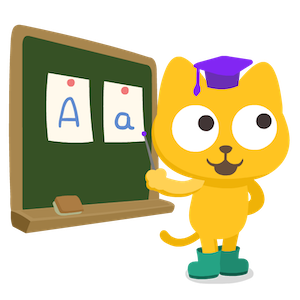So you want to learn a foreign language? That’s a great move. But I’m sure you already know that it’s a daunting task—even for the geniuses among us.

There’s plenty of advice online and offline on how to approach learning a second language. Tips to save time, guides for how to read your way to fluency, or on how to listen to certain podcasts every day until you can understand them.
The problem is—these are never a one-size-fits-all solution.
You’re unique, and what works for you might not work for the next person.
That’s why this article tries to take a different approach. It will take you through some of the most common questions about language learning and then dive further into the mechanics of language learning.
And if you read through to the end, you’ll likely have a full understanding of how to approach language learning—and how long it will take you to become fluent.
Table of Contents
- The Best Ways to Learn a New Language
- Consider Your Desired Language Carefully
- Time Commitment for Learning a Foreign Language
- The Components of Foreign Language Acquisition
- The 5 Stages of How to Learn a Language
- How to Use the Senses When Studying New Languages
- Takeaway
- How can Studycat Help Your Little one Learn a Foreign Language?
The Best Ways to Learn a New Language
When embarking on this wonderful journey, you can save yourself a lot of time by understanding a few simple concepts at the very beginning. Languages are an amazingly complex and wonderful form of communication, but they can be broken down into easy to understand concepts and approaches.
Before getting started, you might want to know how long it can actually take to attain fluency in a new language. So, we look at 5 of the most common languages in the world and how long it took people to master them.
We also break down foreign language learning into its fundamental building blocks so that we can understand how we learn as people. Lastly, this section takes a look at the key factors that affect the ability of people learning, and what can help them succeed.
Set Your Language Learning Expectations
Language learning is a long journey. It’s not something you or I can achieve overnight. It can also be a daunting task that can easily discourage a lot of people.
But you have to fight this if you want to achieve this goal.
An easy way to make it seem more achievable is to break language learning up into its components.
After all, information is power. And knowing everything about learning a language can certainly help make it more attainable.
If you approach foreign language learning just like any other long term project or hobby, I can assure you, your chances of success will greatly increase!
Here are a few things to keep in mind before learning even a single word of a new language. 
- Why do you want to learn this language?
- How difficult is the language in terms of time required?
- Do you have enough time in your schedule to set apart each week for language learning? Some people advise studying more than 15 hours a week to reach an optimal part-time learning schedule—are you able to do this?
- What will be your motivation to learn this language? Will it still keep you jumping to read, listen, and talk in that language 1 month from now? 6 months? 2 years? This is a very important part of staying on track.
- Are you able to be consistent with your language study? The more consistent you are with your studying, the faster and more efficiently you’ll learn your new language.
Time Commitment for Learning a Foreign Language
Everyone learns at a different pace, and with foreign language learning, it’s no different. You might already have a general idea of how fast of a learner you are, which is great.
But beyond that, it might help to have a good sense of what’s actually required when learning a new language.
For simplicity’s sake, let’s look at how long it takes to learn five of the most popular languages on average.
Of course, this will depend on what your first language is, so please use these figures as general estimates.
A key thing to note when reading the below estimates is that they refer to absolute fluency from the perspective of a native English speaking adult.
And of course, your goals will be different from mine or another person.
Maybe you just want to speak enough to travel, or perhaps have a regular conversation. The below estimates also sometimes involve immersing yourself in another culture, which isn’t always an option for people.
Every person will have their own language journey to go on, so enjoy it.
English
Going by the Common European Framework of Reference (CEFR) rating system, there is a classification for different English levels. Cambridge English calculates that in order to reach “mastery” you will need between 300 and 400 in-class hours. 
Most people would need around a B2 level (180-260 class hours) to comfortably work in an office environment. But it really depends on the country, job, and environment—and you!
You can read more about CEFR’s English reference levels and how Cambridge English determines the length of time to learn from this report by Cambridge English Press.
Chinese
The Foreign Service Institute (a U.S. agency for government employees) says that to develop complete fluency in Mandarin Chinese (as a native English speaker), you’d have to spend about 2,200 hours in a classroom.
On top of that, in their experience, you’d need to add an additional 1,320 hours (or more) of self study at the same time.
This is a pretty large number, and it does come with some caveats. These students in the study were around 40 years old on average, and had to achieve near ‘natural’ fluency.
Unless you want to work in the foreign services for your government, your goals can be much less ambitious.
I’d personally be happy achieving conversational fluency in any other language, and that comes with much less hours required!
French & Spanish
Continuing to go with the FSI studies, they classify Spanish and French as some of the foreign languages that are easier to learn if you’re a native English speaker.
Their students took on average about 24 weeks of in-class and self study learning to become fully fluent.
That’s not bad—if you have the time and resources like they did!
In total, that works out to be around 600 hours of classroom time, as well as at least 360 hours of self study.
To put it in another perspective, if you were able to carve out about 10 hours a week to dedicate to studying Spanish or French, you could expect to become near fully fluent in under 2 years.
To reach a conversational level, you could reduce the time by quite a bit—it all depends on your goals!
German
Even though German is a language related to English, it can still take quite some time to learn.
The FSI’s students took about 30 weeks of class room and self study to achieve full fluency.
That’s about 750 hours in a classroom, with over 450 hours self studying in addition.
These experts have a high bar to pass in terms of fluency, and your requirements can often be much lower if you don’t need to be an absolute expert.
Takeaway for Time Required to Learn a New Language
The above expectations for the time needed to learn a language are thorough, but may not apply to you.
As mentioned, these were mostly taken from the FSI (except for the CEFR), which dealt with a large but specific group of people training at an older age, but full time and with all the resources of the US government at their disposal!
You probably aren’t in this same situation—and that means the time it takes you will of course be different.
But the key takeaway is to know that learning a new language is a long and fulfilling journey. At the end of the day, you get out of it what you put in.
So try to make it fun, enjoyable, and make sure to stay motivated in whatever way that suits you!
The Components of Learning a Foreign Language
When people embark on the quest to gain fluency in a foreign language, they often skip over some of the most essential parts. Many of usl like to dive into the deep end without first dipping our toes in the water.
But knowing how deep the pool is or what the temperature is are important first steps.
And it’s no different when learning a new language.
For starters, language learning is typically broken down into 3 main parts:
Grammar
Grammar is the set of rules that underlies how words in a foreign language are used and spoken. We tend to naturally learn these as children while growing up learning our first language.
But as adults, these are often taught specifically through classes and instruction.
In recent years, debate has grown around whether or not grammar should be explicitly taught to adult learners. Some linguists think that grammar should come naturally as part of the process of language learning rather than being confined to specific rule memorization.
The debate is still going on, but it never hurts to be aware of different schools of thought!
Phonology
Another core concept in language learning is phonology. This component entails all of the different sounds used in a language. It’s helpful to know the intricacies of languages when speaking them.
Especially when certain words can have very different meanings when pronounced only slightly wrong. Think along the lines of taking sheets off a table or going to visit the beach this weekend.
Phonology is important!
Lexis
The other major component of foreign language learning is the lexis. All of the words and phrases in a language make up this aspect.
So if you know even a single word of your target language, you’ve already begun to learn its lexis!
The above three components make up a significant part of the language learning journey. These are a natural part of most language lesson programs that you’ll find, regardless of which one you are pursuing. 
Another area of language learning important to understand are called ‘universal influences.’
Lourdes Ortega, a professor of applied linguistics at Georgetown University, calls a specific series of success factors the ‘universal influences’.
Her work, amongst others, states these influences are very useful predictors in determining how fast and efficiently a new language learner can advance in their studies.
The most important universal influences are:
- Mother tongue
- Age
- Environment
- Cognition
Mother tongue:
When choosing and attempting to learn a foreign language, your first (native) language is an important influencer.
Related languages can often be much easier to learn than ones from different families and regions of the world.
Think of a native French speaker attempting to learn Spanish versus Russian.
Or a native Mandarin speaker choosing to learn either English or Cantonese.
Languages that are related to our mother tongues often share similar structures or underlying rules. This allows us to make connections faster in our minds, which leads to more effective learning.
This is why it’s important to choose which new language you are going to pursue—the relativity to your mother tongue can literally be the difference between years of study.
Age:
Age certainly has an impact on your language learning journey. Children spend a large portion of their time learning and interacting with anything and everything in sight.
This is why they don’t need much explicit instruction in learning their first language.
But as adults, we have to work, do chores, take care of children, and have a plethora of other responsibilities in our everyday lives. How many of us can really dedicate an entire 6 – 24 months full time to learn a new language after the age of 20?
Adults also almost universally have a mastery of one language already.
If a person begins to learn a language later in life (say in their 20’s), the nature of this first language highly impacts how they will learn another one.
So while age is definitely an important factor in learning a language, it can often be environmental factors that reduce our effectiveness in its acquisition.
Environment:
The environment of a language learner is a huge influencer over the success and failure of the student.
To break it down even further, a lot of linguists feel that there are 5 key success factors in a student’s environment if they ever want to achieve complete fluency.
- Attitude—The constant motivation and willingness to learn the new language.
- Input—Having access to material and language that is at or slightly above your current level of language proficiency.
- Interaction—Access to problem solving in language learning. The ability of a language learner to get exposure to corrections and adjust their words and phrasing.
- Output—The opportunity for a language learner to use a language in meaningful ways. Like creating sentences, new sentences, etc.
- Attention—The constant ability of a language learner to notice new things in the process of learning another language.
Cognition:
The universal influence of cognition equates to how well a person can learn a new language.
It’s the idea that learning a language requires a repeating cycle of learning, practicing, and remembering. With enough time, consistency, and exposure to new elements of a language, this puts you on the path to fluency.
The 5 Stages of How to Learn a Foreign Language
Another important step in demystifying the language learning journey is to see how it’s accomplished. In this case, it would be helpful to know the basic levels of proficiency that can be achieved over time. 
Every person is of course unique. What works for you might not work for someone else. And this is no different when applied to language learning.
But that doesn’t mean we need to list out 1,001 different scenarios for how adults typically learn a language. There are some universal truths in how we progress, and we can look at that next.
Linguists generally agree on the stages of foreign language learning, from an absolute beginner to completely fluent.
It’s why we see categories of fluency in most major languages when it comes to testing.
Just look at the CEFR above, where they classify English proficiency from levels A1 through C2.
This same type of methodology is often applied to most languages.
In general, the 5 stages are:
- Preproduction
- Early Production
- Speech Emergence
- Intermediate Fluency
- Advanced Fluency
it is important to note, the time estimates below are cumulative, not separate.
Stage 1: Pre-production
The first stage of foreign language acquisition is also sometimes referred to as the silent and receptive stage. Students at this level aren’t yet able to speak many words, if at all.
Most of this stage is spent learning basic vocabulary and how to understand simple questions. Students practice listening, spelling, and learning some of the more common words.
This stage is generally the fastest of the 5 levels. Once a student gets a handle on essential vocabulary and questions, they can begin practicing self-speak and pronunciation.
Vocabulary: Up to ~500 words
Time frame: Several days up to 6 months
Stage 2: Early Production
Students at this level can be expected to give short 1-3 word answers to questions. They might also have memorized several key phrases and can say them when needed.
Their comprehension of more difficult questions will still be limited at this phase.
The level of vocabulary will be growing to recognize more and more words, but the grammar will likely still be at a low level.
Vocabulary: Up to ~1,000 words
Time frame: 6 months to 1 year
Stage 3: Speech Emergence
When foreign language learners reach this stage, they’re often able to communicate in a much better manner.
With a larger vocabulary and a better comprehension of the language, they’ll be able to have rudimentary conversations with other speakers of the language.
Grammar errors are to be expected at this level, but not all the time. Students will be able to understand and say a lot of simple form sentences.
Complex sentences and thoughts can begin to appear as the student starts connecting different aspects of the language too. Some of the more common pronunciation errors will still likely occur, but will vary case by case.
Jokes will still be hard to understand at this stage unless they are simple.
Vocabulary: Up to ~3,000 words
Time frame: 1-3 years
Stage 4: Intermediate Fluency
By the time language learners reach stage 4, they’ll have a very good level of comprehension. Their grammar will have improved greatly, only making a few errors here and there.
The vocabulary will be more than sufficient to cover most situations outside of academia and perhaps some news articles.
Learners often start thinking directly in the new language at this stage as well (as in, not translating from their mother tongue). They’re usually able to write more complex sentences in addition to being able to speak them.
Vocabulary: Up to ~6,000 words
Time frame: 3-5 years
Stage 5: Advanced Fluency
Students at this level will feel completely comfortable conversing with native speakers—because their level of understanding won’t be that far off from one another!
Stage 5 learners will continually expand their vocabulary as they seek out new situations and opportunities to use the new language.
Of course, consistent practice and use of the language will ensure that the student approaches a near-native level of speech, comprehension, and understanding.
Vocabulary: An understanding at an academic level, with possible gaps based on culture and background
Time frame: 5-7 years
How to Use the Senses When Studying New Languages
When we’re young and receptive, we all follow a natural progression when learning our first language.
We start by absorbing sounds and words from those around us. We listen to anything and everything.
When mom points out an apple, she slowly and calmly says the word over and over again. And we slowly learn to process that information until we get to the point of trying to speak.
Eventually we’re able to say simple words and sentences to help communicate with our parents and family. We then progress to learning to read letters and then on to sentences, paragraphs and books.
Finally, we start practicing writing letters, then words, then sentences and beyond.
These four fundamental components of using a language are necessary steps to attain fluency, even if it’s your first, second, or third language.
But as adults, we have a choice in how we want to learn a new language. Some linguists advise following the same path as children do:
- Listening
- Speaking
- Reading
- Writing
Others advise learning all four areas at the same time. Whatever direction you or your language course directs you to do, there are many ways to approach each area.
Here we’ll look at a wide variety of activities and tools you can use to advance in each area—regardless of what language you’re learning.
Before we get started though, one important thing to keep in mind is how these areas work. When you practice listening and reading, you are consuming a form of input from material.
Whereas speaking and writing is, of course, the opposite—output.
On the former side, we absorb content that others have created. For the latter, we use the words and phrases we have learned, connect them together, and produce output in the form of speech and writing.
Let’s take a closer look at each of the 4 areas of how we interact with language.
 Listening:
Listening:
Active listening can be a challenge in any language, whether it’s our first language or our 7th!
But it is one of the most important steps along the path of foreign language learning, and there are many ways you can improve how you go about it.
Firstly, there are different styles of listening. From conversations to lectures, we can learn different nuances of a language when hearing different styles.
Just like using the other human senses to learn, it helps by going in baby steps. When listening to your new language, you should always aim for something at your current level or slightly above.
You don’t need to go listen to the final lecture of a Harvard economist if you only know how colors of the rainbow are pronounced. So, always try to match your listening content to your current skill level and slightly above.
This way, you’ll be able to understand the context of what you’re hearing, while still coming across new words (and being able to see how they fit in).
Another thing to keep in mind is context. It will take a while before you can understand everything being said, but that’s no reason to panic.
If you can focus on going ‘top down’, you’ll be miles ahead in no time. That is, try to first understand the situation of what you’re listening to, and then move on to understanding specifics.
One last thing to keep in mind when listening—accents matter! Depending on what language you want to learn, you might want to first choose which country’s accent you want to acquire.
Think of American English versus British English.
When written down, it’s not easy to notice any difference (a good thing). But put an American and an Englishman into a room together and you might quickly notice they sometimes have difficulty understanding each other!
So if your dream is to one day work in London, you may want to focus all of your learning materials on British English rather than American. The same goes for many of the popular languages around the world.
If you’re looking for a few ideas on how to practice listening, here’s a list of things you can try out (in your language of study).
Beginner:
- Children’s shows
- Cartoons that you enjoyed and have language dubbing
- Music
- A language partner or tutor, locally or online
Intermediate:
- Popular TV shows and movies (subtitles in either language optional)
- Podcasts that include lots of conversations and guest speakers
- Youtube channels that show conversations or have visuals explaining what they mean
Advanced:
- TED talks
- News
- Documentaries and videos talking about things you enjoy
Speaking:
Learning to speak in a new language can be one of the most challenging areas. This is because it not only involves understanding what someone else says, you also have to be able to creatively form new sentences and concepts.
This is also usually a bit harder for adults than for children.
The simple reason? We often feel embarrassed for not knowing how to say something correctly, whereas children tend not to care at all.
And since practice makes perfect, embarrassment can slow you down. So don’t be shy and get used to expressing yourself!
It’s okay to make mistakes, that’s how we learn.
Hopefully you are lucky enough to have a friend that is fluent in your target language. Or perhaps you can travel, or even live in a country where they speak it.
If not, it can be a bit strange learning to speak by yourself. But it’s not impossible. It just might be a little weird—because it often involves talking to yourself!
When you’re reading, watching, or listening to content in your new language, you should get used to mimicking the speech. While reading on your own, don’t be afraid to speak the words out loud. Even if you just whisper to yourself, that still counts as practice!
Not only that, but saying the words out loud has been proven to improve your memory of those words.
And the same goes for writing—saying the words out loud not only helps you practice speaking, it’s actually been shown to improve the quality of your writing as well.
Here are a few things you can use to practice speaking while learning your new language.
Ways to help you practice speaking:
- Language apps that let you practice speaking words
- Read words out loud with any content you see
- Practice repeating movies, tv shows, and song lyrics over
- Find a language partner or tutor, either locally or online
- Practice reading your writing out loud, more than once for each sentence
Reading:
When learning a foreign language, reading can be one of the most enjoyable activities we take part in. On the other hand, when forced to read topics that are more wordy, long-winded, and not the most exciting—we can fall asleep in no time!
Certainly, spending hours face down in a text book reading grammar rules and recycled conversations can be tedious, but it is useful—especially at the beginning.
But once you’ve advanced beyond a basic level of the new language, the fun can begin.
Most of us have interests and hobbies that we consume in our native tongue—so why not pursue these in the new language too?
The most important part of choosing what to read in your new language is to aim just slightly above your current comprehension. If you’re just starting out learning English, you won’t be able to understand Hamlet, right?
But you might be able to read a recreation of Hamlet in the form of a children’s book, for example.
There are a million varieties of text out there. Whatever area your interest is in, you’ll be able to find content at an appropriate level for your learning.
It’s also important to mark down any words you don’t understand. If you’re reading something you enjoy and are able to discover new words—you’ll be better able to commit these to memory because of the context.
Always a good thing when learning!
Here are several ideas for you to get started when choosing what to use for reading practice.
Beginner:
- Children’s books
- Comic books with speech bubbles
- Beginner’s novellas and short stories
Intermediate:
- Easy to read fiction like the Harry Potter series
- Pop culture magazines
- Blogs in areas that interest you
Advanced:
- Famous classic literature (here’s a free resource for public domain classic books)
- Popular foreign movies and tv shows (with subtitles on)
- Newspapers
Writing:
When it comes to language learning, writing is often one of the last pieces of the puzzle. Some foreign language learners even choose not to learn it as their goal is to only become conversational.
And there’s nothing wrong with that—if that’s what you desire.
But if you’re looking to live and work in a country where your desired language is the one used everywhere, then writing will definitely need to be a part of your language journey!
It helps that writing can be a fun way to expand and learn your language.
Here are a few neat things about practicing writing in a foreign language:
1. It improves your memory
One great aspect of learning languages by writing is that you can improve your memory of difficult vocabulary and phrases. The act of writing itself, has been proven to improve the memory of new concepts (and words).
It’s why people take notes during class and business meetings—and often seem better able to recall the subject matter later on.
You also have more time to come up with sentences and structure when writing in your desired language.
2. The thesaurus is your friend
Perhaps a sentence doesn’t sound just right after you made it. Well, why not jump over to thesaurus.com, and learn some new synonyms to replace the key words in your sentence.
Not only will your writing sound better, but you’ll often learn new words to use in your conversations as well.
If you’re able to attend a class or have a language tutor, writing is also a way to get more permanent feedback.
3. Remembering new vocabulary
When we speak, the moment is soon over, and the opportunity to get feedback can last a very short time.
But with writing, the more we practice and produce, the more opportunity we have to get feedback from teachers and native language speakers—even days or weeks later!
Again, this not only helps improve your writing, but it also helps your brain better understand the nuance of the new language.
4. Read before you write
Before you start writing content beyond basic sentences and words, you’ll of course want to learn more vocabulary in that area.
Say you want to start practicing writing by, for example, creating online recipes of your favorite food. You should probably go read a tonne of recipes in that language first to familiarize yourself with the vocabulary and terms.
Then you’ll be able to write new recipes much faster and easier.
You can do this for any new area or style of writing that you want to try. You’ll not only open up a potential new source of fun for practicing the language, but maybe you’ll be able to learn a thing or two about your favorite topic as well.
5. Use writing tools
One last tip for writing, in recent years some amazing software programs have been created like Grammarly that can vastly aid your writing skills.
The best part? Many of them are free to use for their basic programs. I highly recommend using one when practicing writing in your language of choice.
If you’re looking for a few methods on how to practice writing, here are some ideas.
Beginner:
- Use language apps that let you practice writing words and sentences
- Write a list of common phrases that you keep seeing (or look them up)
- Write down words that you struggle with to remember them easier
- Practice rewriting the sentences and paragraphs you learn in your language textbooks
- Find a local or online tutor and try to communicate with them in the new language via text or emails as much as possible
Intermediate:
- Try online journaling for practice, and write about your daily life
- Try writing in forums of your new language
- Find a penpal or language exchange partner and text or email them daily
Advanced:
- Join online communities that help each other improve their writing (ex. Writing.com, Critique, Keep Writing)
- Practice trying to replicate different styles of writing
- Practice writing full stories, articles, and conversations on any subject
Takeaway
If you’ve made it this far, congratulations! Hopefully you’ll have learned a bit more about the underlying nature of how we learn languages as adults (and as children).
Language learning can truly be a wonderful yet challenging experience, at any point in our lives.
Whatever foreign language you’re pursuing, just try to keep in mind the reason you set out to learn it in the first place. Keeping motivated over time is one of the biggest challenges of any endeavor like this.
Reminding yourself, daily if possible, can be one of the best ways to help continue your determination to gain fluency some day.
Even real life polyglots often admit to facing problems with a lack of motivation.
But perhaps an old Czech proverb is one of the best reminders of why you’re embarking on this adventure:
“Learn a new language and get a new soul.”
Something heartfelt to keep in mind on your journey.
How can Studycat Help Your Little one Learn a Foreign Language?
We aren’t always able to begin learning a language early on in life, however, it is never too late to start teaching your kids a new language today! Over 12 million families around the world have used our cutting-edge language learning apps to improve fluency in 5 languages!
 We currently have amazing apps for children looking to learn English, Spanish, Chinese, French, and German.
We currently have amazing apps for children looking to learn English, Spanish, Chinese, French, and German.
We pride ourselves on maintaining a safe and useful environment for children in our apps.
The Studycat team has been creating original language learning games for kids and innovating in education technology for 20 years. We have a passion for language learning, and we want to see children become passionate about it too.
Thanks for reading, have a great day!


